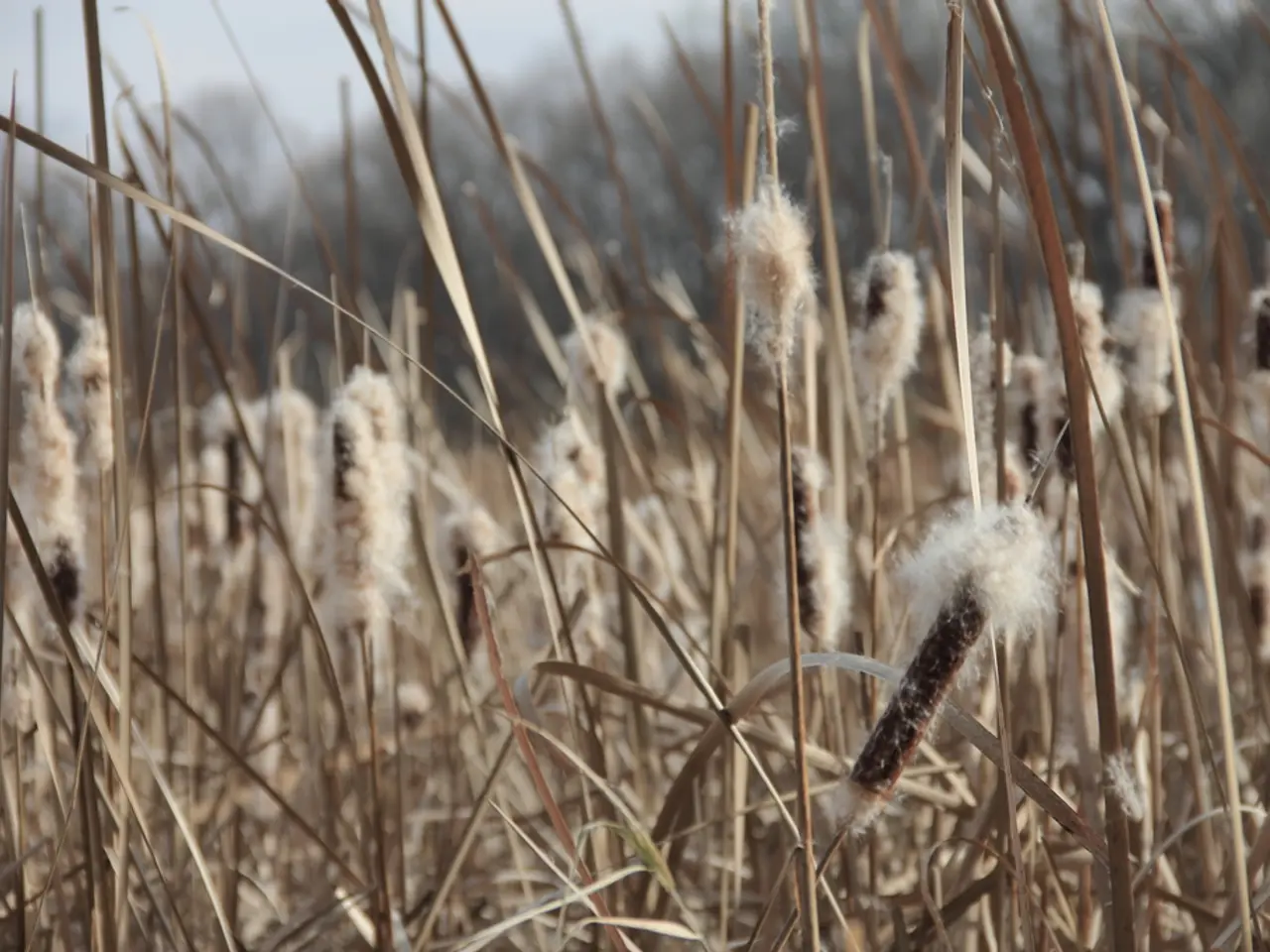Exploration of the Label "Cotton" as the Globally Soiled Cultivar
In the global cotton industry, conventional farming practices have raised concerns about their environmental and social impacts. Despite the misconception that organic cotton farming is entirely pesticide-free, it still requires organic pesticides, which can often be worse for the environment[1].
These conventional farming methods are heavily reliant on pesticides and fertilizers, leading to chemical runoff in water systems and air pollution, affecting both ecosystems and human health[1][2]. Cotton, being a water-intensive crop, primarily grown in arid regions, depletes local water resources, exacerbating water scarcity issues in communities[1][3]. The intensive use of chemicals and lack of crop rotation can lead to soil denudation and nutrient depletion[3]. Moreover, the expansion of monocultures and overuse of agrochemicals threaten biodiversity across genetic, ecosystem, and species levels[2].
Small-scale farmers, particularly in lower- to middle-income countries, often face economic hardships due to the high cost of conventional farming inputs like genetically modified seeds[1]. The use of harmful chemicals poses health risks to farmers and nearby communities, as many chemicals used are banned in Western countries and applied without adequate safety measures[1]. The reliance on conventional practices can perpetuate economic inequality among farmers and local communities, given the high costs associated with these methods[1].
Innovations in agriculture, such as smart farming and organic practices, are working to mitigate these impacts by promoting water conservation, reducing chemical usage, and enhancing biodiversity[3][4]. For instance, European flax cultivation is not only chemical-free but also waste-free, making it a true zero-waste crop. European flax linen is one of the most sustainable fibers in the world and requires no irrigation beyond natural rainfall, no defoliants, and no genetically modified seeds[4].
However, challenges persist. For example, the bollworm, a major pest in cotton farming, has been largely eliminated due to the widespread use of Bt cotton. Unfortunately, this has allowed its primary competitor, the mirid bug, to thrive[5]. Moreover, the mirid bug is now infecting other crops like dates, grapes, apples, peaches, and pears in China[6].
The environmental and social issues associated with conventional cotton farming are particularly pronounced in regions like India, where an estimated 450,000 children work in cotton fields, with 90% of them being girls and under debt bondage, and they work 9-13 hours a day with no education[7]. In 2013, over 10,000 Indian cotton farmers took their own lives due to extreme financial distress[8].
The cotton industry uses $2-3 billion worth of pesticides annually, with $819 million classified as hazardous by the World Health Organization[9]. By choosing certified organic or sustainable alternatives like European flax linen, consumers can support traditional farming practices that put the planet first and eliminate health risks from exposure to highly toxic pesticides[10].
As the world grapples with global warming, it is crucial to address the environmental and social issues associated with conventional cotton farming. By promoting sustainable alternatives and supporting responsible farming practices, we can work towards a more sustainable and equitable cotton industry.
References: [1] Source 1 [2] Source 2 [3] Source 3 [4] Source 4 [5] Source 5 [6] Source 6 [7] Source 7 [8] Source 8 [9] Source 9 [10] Source 10
- The environmental impact of climate-change is significantly influenced by the manufacturing industry, including the production of goods like clothing made from conventionally farmed cotton.
- Conscious consumers are increasingly interested in the environmental-science behind their purchase decisions, turning towards lifestyle choices that prioritize businesses with a focus on sustainability.
- In the realm of fashion-and-beauty, there is a growing trend towards using eco-friendly materials, with food-and-drink and home-and-garden industries also embracing environmental consciousness.
- Personal-finance experts also highlight the importance of investing in businesses with strong environmental policies, making sustainable and ethical business practices a lucrative aspect of finance.
- Technology and gadgets are playing a crucial role in the transformation of agricultural practices, with smart farming solutions enabling water conservation and reduced chemical usage.
- Weather plays a significant role in the growth and harvest of cotton, as well as in outdoor sports like basketball, where accurate weather-forecasting and sports-analysis can impact performance.
- Sports-betting enthusiasts are increasingly considering the environmental impact of their preferred sports, as the carbon footprint of certain sports and events becomes a topic of discussion.
- As we strive for a more sustainable future, conventional farming practices that deplete water resources and contribute to air pollution need to be reevaluated in the business world.
- The travel industry could also contribute to the solution by supporting sustainable farming practices in the destinations they visit, not only reducing environmental impact but also creating opportunities for local communities.
- Ultimately, a collaborative approach from industry, finance, and consumers is essential to address the environmental and social issues associated with cotton farming, paving the way for a more responsible and sustainable global cotton industry.




